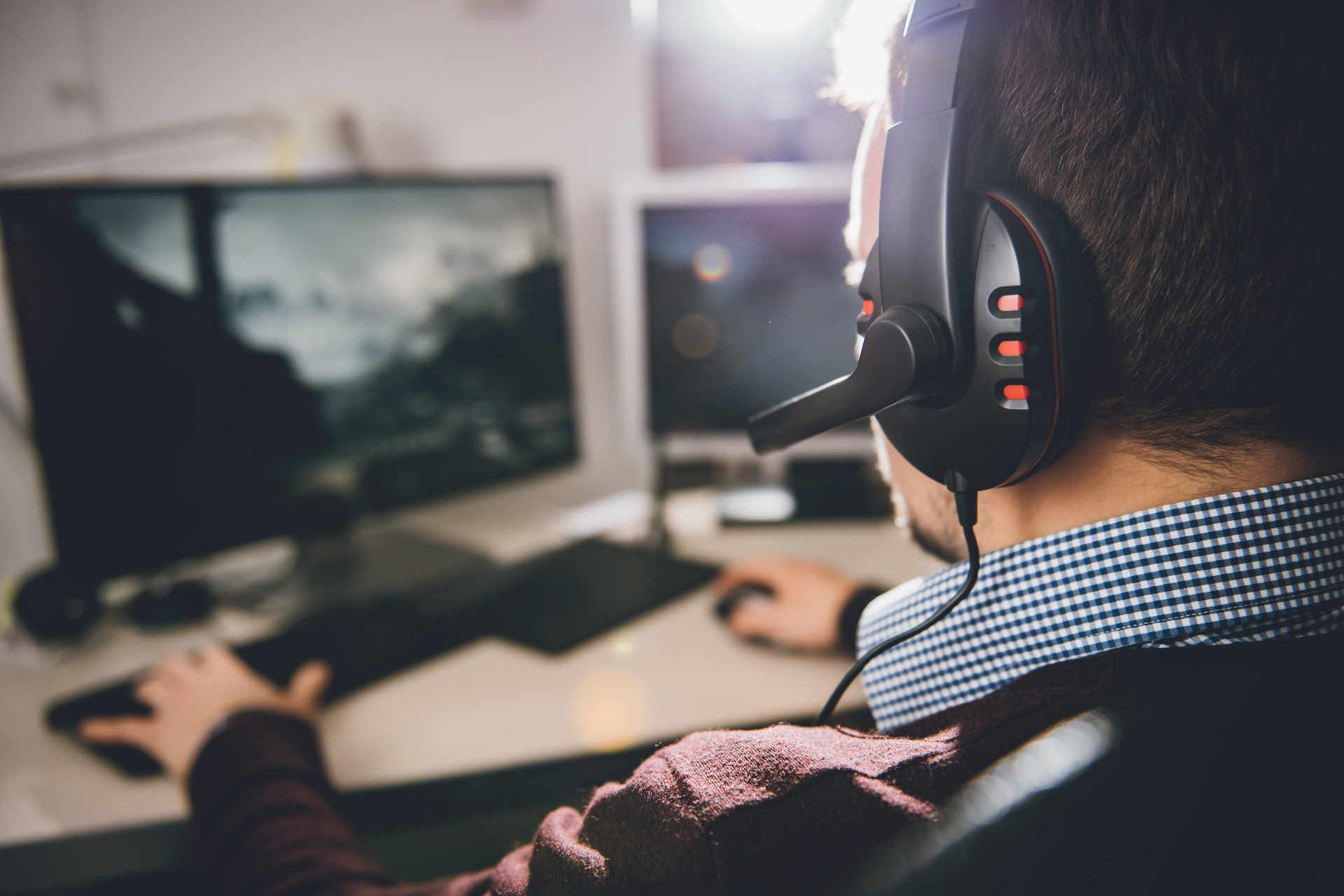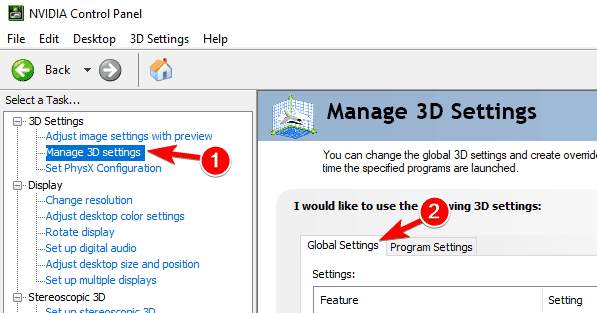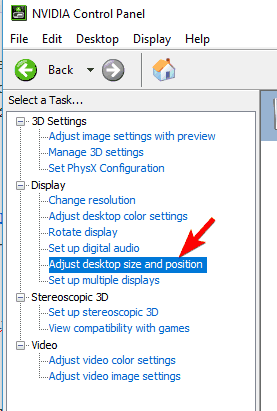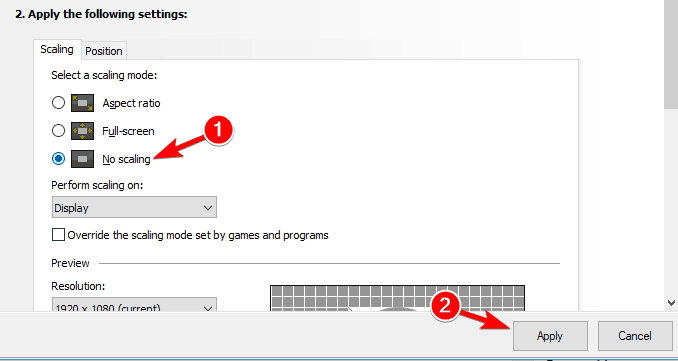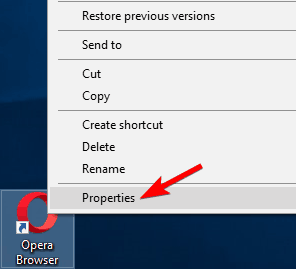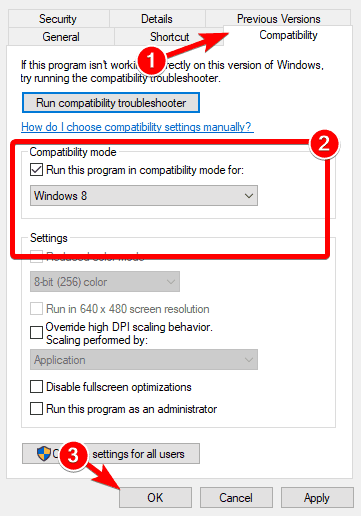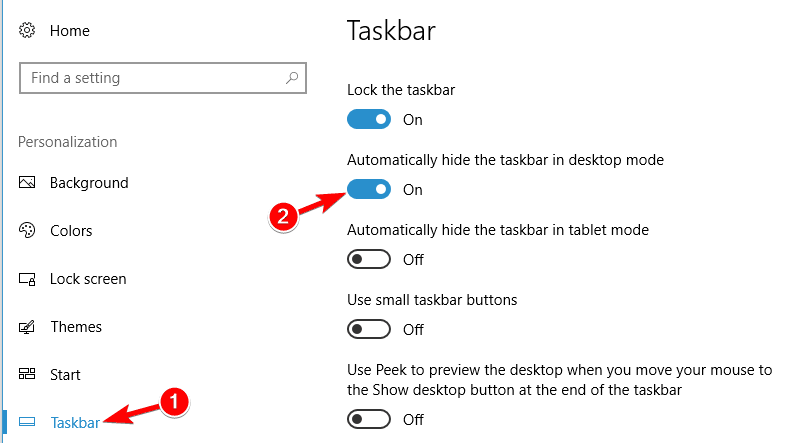- FIX: Windows 10 games won’t go fullscreen
- What to do if Windows 10 is not playing games fullscreen?
- 1. Run your game in windowed mode
- 2. Set display scaling to 100%
- 3. Change your main screen
- 4. Disable Teamviewer
- 5. Change Nvidia Control Panel settings
- 6. Use the Compatibility mode
- 7. Set the Fit setting to Fullscreen.
- 8. Restore your Taskbar to the default position
- 9. Change your resolution in the Catalyst Control Center
- Full Screen problems in Windows 10 while playing Games, watching Movies, etc.
- Windows 10 full screen problems
FIX: Windows 10 games won’t go fullscreen
- Even if it’s mostly a stable OS, the truth is that games won’t always go fullscreen in Windows 10.
- We’ve looked at multiple user reports, so rest assured that a great strategy to fix this distracting issue involves changing the display scaling settings.
- You may also try a new remote control application that never interferes with fullscreen games.
- Running them in Compatibility mode may also do the trick, so refer to the below steps right away.
- Banking-level encryption and total privacy
- Multi-platform support for all major operating systems
- Quick and Intuitive file transfer
- Low bandwidth consumption and fast ping response
- High frame rates to ease troubleshooting
- Get Anydesk
We all love to relax with a favorite game on our computers, but it seems that some players are having problems with fullscreen games in Windows 10.
This sounds like an unusual problem, and today we’ll try to fix that. Some users report that they are unable to run games in fullscreen mode.
According to them, the game just switches to desktop and stays that way while game sounds play in the background.
This makes most games unplayable since Windows 10 games run in fullscreen mode by default, but there are a few solutions that you can try.
What to do if Windows 10 is not playing games fullscreen?
1. Run your game in windowed mode
If your game comes with a configuration file, or if you can set its configuration before starting it, just make sure that you set it to run in windowed mode.
This isn’t the best solution, but it’s a workaround that will allow you to play your favorite game in just a few seconds.
For the best experience, be sure to select borderless windowed mode and the same resolution that you use on your desktop.
2. Set display scaling to 100%
- Open the Settings app and go to System > Display.
- Find the Change the size of text, apps, and other items and set it to 100%.
It has been reported that many games won’t run properly unless the display scaling is set to 100%, so use the above steps to set display scaling to 100% in Windows 10.
You might have to sign out of your account and sign back in order to apply the changes, so be sure to do that. Up next, check if your games are working again.
Even more, there’s a game booster that will get rid of low FPS, freezes, lags, and other issues while playing. If you like the idea of a better gaming experience, don’t hesitate to give it a try as well.
3. Change your main screen
You can experience problems with fullscreen and games if you’re using dual monitor setup. However, you can fix this problem simply by changing your display settings.
In order to do so, right-click on your Desktop and choose Display settings from the menu. When the Display settings window opens, you should see two monitors labeled with numbers.
In the Display settings window, click Identify. A number should appear on your screen. Now in Display settings set the monitor with the same number you got as the main monitor.
Save the changes and try running games in fullscreen. This is a simple trick confirmed by users, so give it a try too.
4. Disable Teamviewer
Many users reported various fullscreen issues with their favorite games, and according to them, the common cause is Teamviewer.
If you’re not familiar with Teamviewer, it’s a remote assistance application that allows you to control any other PC remotely.
This is a rather popular application and many users have it installed. Even though Teamviewer is a great application, sometimes issues do occur.
They all know how to fullscreen a game, that’s for sure. However, this isn’t possible all the time. They were able to solve the problem simply by disabling Teamviewer.
If doing so doesn’t help, you might want to try uninstalling the application and check if that solves the problem instead.
If you need another remote control application that won’t interfere with fullscreen games, try out one with bank-level encryption and an impressive speed. Our recommendation is ideal in that regard.
⇒ Get AnyDesk
5. Change Nvidia Control Panel settings
- Open Nvidia Control Panel.
- Go to Manage 3D settings > Global settings.
- Change Preferred graphics processor from Auto-select to High-Performance Nvidia processor.
- Click on Apply to save the changes and try running games in fullscreen mode.
If you own both integrated and dedicated graphic you might need to change few Nvidia Control Panel settings to fix this issue.
Certain users reported that they fixed the problem simply by adjusting their desktop size and position in Nvidia Control Panel. To do that, follow these steps:
- Open Nvidia Control Panel.
- Go to Display > Adjust desktop size and position.
- Locate the scaling option and set it to No scaling and click on Apply to save changes.
After making these changes, you should be able to run games in fullscreen without any problems. If you use AMD graphics, you should be able to find similar options in Catalyst Control Center.
Can’t open Nvidia Control Panel on Windows 10? In such a case, rest assured that this detailed guide will help you fix the issue in no time.
6. Use the Compatibility mode
- Locate the problematic application, right-click it, and choose Properties from the menu.
- Navigate to the Compatibility tab and check Run this program in compatibility mode for an option. Now select the desired version of Windows, then click on Apply and OK to save changes.
If you’re having problems with fullscreen games on your PC, you might want to try running them in Compatibility mode.
This mode is specially designed for older applications that aren’t fully compatible with Windows 10. To run a certain application in Compatibility mode, you need to complete the above procedure.
After enabling Compatibility mode, try to run your game again. Note that you might have to try several different compatibility modes before you find the one that works for the selected game.
Compatibility mode is a useful feature that allows you to run old software on your PC, so feel free to try it out.
7. Set the Fit setting to Fullscreen.
If you’re having problems with fullscreen in your favorite games, you might be able to fix this issue simply by setting the font size to 100%.
We already showed you how to do that in Solution 2, so be sure to check it out for detailed instructions.
After doing that, you need to open Intel HD Control Panel application and make a few changes. When Intel HD Control Panel opens, navigate to the Display section and set the Fit setting to Fullscreen.
Now check the Override application settings checkbox and save changes. After doing that, you should be able to run older games without any problems on your PC.
Keep in mind that this solution works only if you’re using Intel HD integrated graphics.
If you’re using AMD or Nvidia graphics, be sure to check their Control Panel software to change the aforementioned settings.
8. Restore your Taskbar to the default position
- Press Windows Key + Ikeyboard shortcut to open the Settings app.
- Now navigate to the Personalization section.
- From the menu on the left select Taskbar. Now in the right pane, enable Automatically hide the taskbar in desktop mode option.
According to users, problems with fullscreen games can occur if your Taskbar isn’t in the default position.
Some users like to move their Taskbar to the side or to the top of their screen, but that can sometimes cause this problem to occur.
However, you can easily fix this issue simply by moving your Taskbar to its default position on the bottom.
Once you move your Taskbar to the bottom of the screen, the issue should be resolved and you’ll be able to play your favorite games in fullscreen once again.
If you don’t want to move your Taskbar to the default position, you can fix the problem by setting the Taskbar to hide automatically.
After you enable this option, you should be able to run games in fullscreen mode without any problems.
If Taskbar is not working, do not hesitate to take a look at our quick guide to find out how to solve the issue with ease.
9. Change your resolution in the Catalyst Control Center
- Open Catalyst Control Center and navigate to Graphics/Desktop & Display section.
- Click the triangle button in the big Screen model section and then click on Properties.
- Now set your resolution to the lower one and save changes.
- Navigate to Graphics/Desktop & Display and click on the bottom left small laptop triangle icon.
- You should see several options available. Click on Fullscreen and save changes.
According to users, you might be able to fix this problem simply by changing your resolution in the Catalyst Control Center.
After doing that, you just need to change the resolution on your PC and set it to the desired value. Now your problem should be resolved and you’ll be able to enjoy games in fullscreen mode once again.
If the issue persists, do not hesitate to repeat the entire procedure after minimizing the game.
As you can see, solving full-screen issues on Windows 10 is relatively simple, and we hope that you managed to solve this problem using one of our solutions.
You may often experience issues while trying to run certain games in fullscreen mode. Do keep in mind that the above solutions cover all these problems:
- PC game won’t go fullscreen – Many users reported that Windows 10 isn’t running games in fullscreen. This is usually caused by your game or graphics card settings.
- Fullscreen games keep minimizing – If your fullscreen games keep minimizing, the problem might be a third-party application. Don’t hesitate to take a look at this dedicated guide right away.
- Windows 10 fullscreen games black screen, flickering, crash – Many users reported flickering, crashes, and black screen on Windows 10. These often occur if you have a dual monitor setup.
- Taskbar showing in fullscreen game – Another relatively common issue on Windows 10 is the taskbar overlaying on top of games. If the taskbar won’t hide in fullscreen games, just force-hide it.
- Windows 10 game resolution problem – Sometimes, you just need to adjust your screen resolution to 1024 x 768, then try playing your game again.
- Windows 10 not using full screen – That’s a relatively common problem, and it’s most likely caused by your settings. However, you should be able to fix it by using our solutions.
- Windows 10 full screen not working – This is just a variation of this issue, but you should be able to solve it easily with one of the above procedures.
Let us know if you managed to fix all your fullscreen game issues in Windows 10. Make sure to use the comments area in that regard.
Full Screen problems in Windows 10 while playing Games, watching Movies, etc.
Some applications look good only when run in fullscreen. If you are watching a movie or playing a game, you’d want to use the entire screen space for the app. However, some of the Windows 10 OS users complain that they face different types of Windows 10 fullscreen problems & issues. Sometimes, it won’t go fullscreen; sometimes the fullscreen covers only a part of the screen while at other times it just goes to a maximized window instead. Let’s see some steps that may help you troubleshoot the issue.
Windows 10 full screen problems
Confirm that Game full-screen setting is turned On
Upgrading the operating system is sometimes a terrible task, and certain things go wrong. If you are not able to run the games fullscreen, you may want to check the games’ settings. Most of the games have a setting of turning ON/OFF the fullscreen mode. See the status of fullscreen mode in the games that are not able to play fullscreen. If it is OFF, turn it to ON.
Note that not all games provide the setting, but most games do. While you are at it, you might check the resolution as well. Try changing the game resolution from inside the Game Settings a few times to see if it works. Try increasing the resolution first and then see if Windows 10 fullscreen problems & issues go away. If increasing or default resolution does not work, try reducing the resolution a bit to see how it affects the fullscreen issue. If you see any improvement, you may reduce it a bit further to see if you can play it fullscreen without losing out on details.
Check Windows 10 Display Properties
Every operating system has a default resolution. When you upgrade to the previous resolution, the resolution already set is carried forward to new installations. In case of clean installations, the operating system determines the best resolution for your display and sets it to what it thinks is best. When this display resolution conflicts with that of games, you may not be able to play games fullscreen.
To know the minimum resolution supported by a game, check out its system requirements. It could be printed on the game DVD. If you downloaded the game, check for email that confirms your purchase. If you still can’t find the system requirements, check with the customer support.
This section’s summary is that if you are facing Windows 10 fullscreen problems & issues, you have to check that Windows 10 is supporting the resolution that the game requires. Suppose the game requires 360p and Windows 10 is 780 (by default, Windows 10 is 1024 by 768 for regular displays), there will be conflict. You will then have to see if your copy of Windows 10 can lower the resolution to 360. If not, you will always get the game in a windowed mode. You may or may not be able to maximize the window.
Another takeaway from this section is that most games need to be upgraded as they still run on lower resolutions while most of today’s operating systems, like Windows 10, support much higher resolutions. That could be a reason why you cannot play games fullscreen in Windows 10.
Upgrade your Graphics Card Drivers
You may need to update your Graphics Driver. When you upgrade via a clean install, Windows 10 installs generic drivers for most of your hardware. You can try installing the original device driver software if you still have it. It has helped some users. If installing original device drivers does not help, you may also try your luck by upgrading to latest device driver software available on the manufacturer’s website.
Windows 10 Text and Font Size
This may not make a difference if nothing works you may want to try this. I do not believe this is going to make any difference. If the font size on your Windows 10 computer is set to more than 100%, then some users have reported that it creates Windows 10 fullscreen problems & issues.
Many users often increase the font size using the slider in Display Properties to scale it up a bit so that the new GUI is not hard on eyes. Click on Settings and then in the window that appears, click System. The very first option in the left pane is called Display. While selecting that option, see the right pane to check if the display is scaled up or down. It should be showing 100. If not, move the slider to make sure the display fonts are set to 100% and not more.
You may also try changing the default display if you are using more than one.
Let us know if any of the above solves your Windows 10 full-screen problems.

